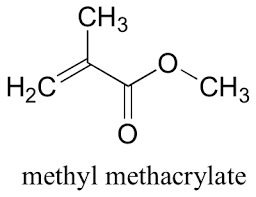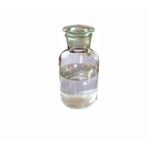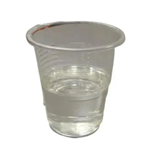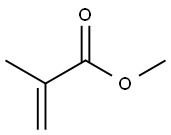Surgical applications of methyl methacrylate
Nov 7,2019
In total hip and knee joint replacements, most arthroplasties are anchored to the contiguous cancellous bone in an acrylic bone cement bed. There are more than 30 commercially available plain acrylic bone cements in the United States of America alone. With few exceptions, the powder comprises beads of PMMA or a PMMA-based polymer, a radiopacifier of BaSO4 or ZrO2 particles, and benzoyl peroxide as the initiator of the polymerization reaction.The liquid monomer comprises Methyl methacrylate monomer, N,N-dimethylp-toluidine (DMPT), as the accelerator of polymerization reaction and hydroquinone as an inhibitor of that reaction. There are some alternate plain acrylic bone cements, which have been developed to overcome various perceived drawbacks of the plain acrylic bone cement formulation, and these have been described elsewhere.
General applications
Outside the medical and dental environment, MMA polymers and co-polymers are used in water-based, solventbased, and undissolved coatings. Outside the medical environment, exterior latex paint, based on an emulsion containing Methyl methacrylate, is the surface coating in which the monomer is used most widely. Solvent-reducible polymers containing methacrylates are used widely in industrial finishes, metal, and foil coatings. Polymer concretes, based on Methyl methacrylate and Portland cement, are used to patch highways and bridges, and Methyl methacrylate is also used in the production of polymers that are added to lubricating oil. In domestic situations, MMA is also used for the preparation of synthetic fingernails and orthotic shoe inserts.

Toxicity and sensitivity to Methyl methacrylate
Studies describing the general toxicity and sensitivity to Methyl methacrylate have been reported since the 1940s. In medical and surgical settings, postoperative complications are known to occur following the use of acrylic cement in reconstructive orthopaedic surgery, such as hip or knee joint replacements. These associated complications have often involved cardiovascular dysfunction, resulting in mild to moderate hypotension, cardiovascular collapse, and postoperative deep vein thrombosis, particularly at the site of cemented area. Many studies have attempted to explain the pathophysiology of these complications, which seem to include both activation of coagulation and the direct harmful effect of Methyl methacrylate—which may, in turn, cause damage to blood cells and endothelial cells.1 During total hip arthroplasty, MMA plasma levels have been found to be higher after acetabulum cement implantation—compared with femoral cement implantation—with plasma Methyl methacrylateA levels peaking above 1 µg/mL in some cases, although the half-life of MMA is relatively short.
An in vitro study revealed that Methyl methacrylate produced direct relaxation of the rabbit aortic ring, constricted with either potassium or noradrenaline in calcium-deficient media and inhibited subsequent calcium-induced constriction.This suggested that MMA may interfere with intracellular and extracellular calcium mobilisation, including excitation and contraction coupling in vascular smooth muscle, which may, in turn, play some role in producing the hypotension observed to occur when acrylic bone cement is used during orthopaedic procedures.18 Moreover, in vitro studies using MMA concentrations of 0.1–1 µg/mL, alone or combined with thrombin, have been shown to effect coagulation via activating tissue factor, indicating that MMA in concentrations found in the central venous blood in vivo can probably contribute to the activation of coagulation. In addition, there may be toxic effects from the mixing of various components of the cement in orthopedic settings. Polymerization of the acrylic bone cement is exothermic, with a maximum polymerization temperature around 70–110◦C. This is potentially high enough to cause thermal necrosis of the periprosthetic tissue. There may also be toxicity due to the residual DMPT, BaSO4, and ZrO2 in the PMMA matrix, which have been discussed elsewhere. The toxicity of MMA in dental settings has been reviewed elsewhere as well.
Occupational exposure and toxicity
Methyl methacrylate has long been used in various industries, most of which have involved monomer and polymer production, and/or plastics manufacture. The toxicity of Methyl methacrylate in workers occupationally exposed to Methyl methacrylate at varying doses in these factories is discussed elsewhere.Research on Methyl methacrylate toxicity continues to show conflicting results. A Bulgarian study by Prakova,for example, revealed that acid-base disruption in humans may be associated with overexposure to airborne Methyl methacrylate in PMMA production operations. Respiratory acidosis was also indicated by increased pCO2 in some groups of workers, suggesting that the clinical response to Methyl methacrylate exposure may involve both a metabolic and respiratory acidosis component. However, a recent investigation of two worker cohorts occupationally exposed to Methyl methacrylate in acrylic sheet production did not indicate any increased mortality. Aside from industrial settings, the Methyl methacrylate monomer also appears to be toxic in the medical workplace. Several body systems are probably affected in this occupational environment, including the skin, respiratory tract, and the neurological system. Methyl methacrylate is a mild skin irritant and has the potential to induce skin sensitisation in susceptible individuals. Orthopaedic surgeons, surgical nurses, and other operating room staff who work with this material may be exposed when they occasionally contact the Methyl methacrylate monomer directly, such as when using acrylic cement during the insertion of prostheses. Medical personnel may also be exposed to a certain amount of Methyl methacrylate fumes during the ultrasonic removal of Methyl methacrylate cement as part of revision hip surgery, although research suggests that these actual levels may be safe. The preparation of prostheses and appliances by theater technicians and other medical staff also involves a certain degree of manual handling and dermal exposure to MMA products.
Cytotoxicity
Many researchers have previously examined the possible cytotoxic effects of the MMA monomer, as well as the polymer PMMA. However, not all results are consistent. Dahl et al,for example, investigated the influence of Methyl methacrylate in the cellular integrity of monocytes, granulocytes, and endothelial cells, finding that all cells treated with 10µg/mL showed marked signs of cytotoxicity after 1-minute incubation. Following 30-minutes incubation, the majority of cells were totally disintegrated. In animal studies, Methyl methacrylate was also found to affect mitochondria function and structure as an uncoupler of oxidative phosphorylation in isolated mitochondria experimentally in rat liver cells.However, animal experiments have revealed no toxic effects of orallyadministered Methyl methacrylate to the major organs of rats, with Methyl methacrylate rapidly hydrolysed by serum nonspecific carboxylesterase. Methyl methacrylate has also been shown to be toxic in experimental studies using a human neuron-enriched primary culture, derived from embryonic brain tissue.The physical and chemical properties of Methyl methacrylate appear to have some effect on the lipid bilayer in biological membranes when cytotoxicity testing has been carried out against primary human gingival fibroblasts, human submandibular gland adenocarcinoma cell line, and human erythrocytes.Nonetheless, Methyl methacrylate typically exhibits minimal cytotoxicity and only small changes in dipalmitoylphosphatidylcholine liposomes.
- Related articles
- Related Qustion
- Methyl methacrylate vs Poly(methyl methacrylate): Monomer and polymer May 11, 2024
Methyl methacrylate (MMA) is a monomer unsaturated ester. It has a variety of uses in polymer manufacturing.
- Methyl methacrylate: Application, synthesis and toxicity May 8, 2023
Methyl methacrylate is an important monomer, which is widely used for producing acrylic plastics or producing polymer dispersions for paints and coatings.
Etomoxir is a member of a family of substituted 2-oxirane-carboxylic acids that inhibit mitochondrial long-chain fatty acid β-oxidation (FAO), ketogenesis, and gluconeogenesis.....
Nov 7,2019InhibitorsPramocaine (INN and BAN, also known as pramoxine or pramoxine HCI) is a topical anesthetic discovered at Abbott Laboratories in 1953 and used as an antipruritic.....
Nov 7,2019AnestheticsMethyl methacrylate
80-62-6You may like
Methyl methacrylate manufacturers
- Methyl methacrylate
-

- $10.00 / 1kg
- 2025-06-12
- CAS:80-62-6
- Min. Order: 1kg
- Purity: 99.5%
- Supply Ability: 100 TON
- Methyl methacrylate
-

- $1.30 / 1kg
- 2025-06-06
- CAS:80-62-6
- Min. Order: 1kg
- Purity: 99%
- Supply Ability: 3000tons
- Methyl methacrylate
-

- $12.00 / 1kg
- 2025-06-06
- CAS:80-62-6
- Min. Order: 10kg
- Purity: 99%
- Supply Ability: 300tons






